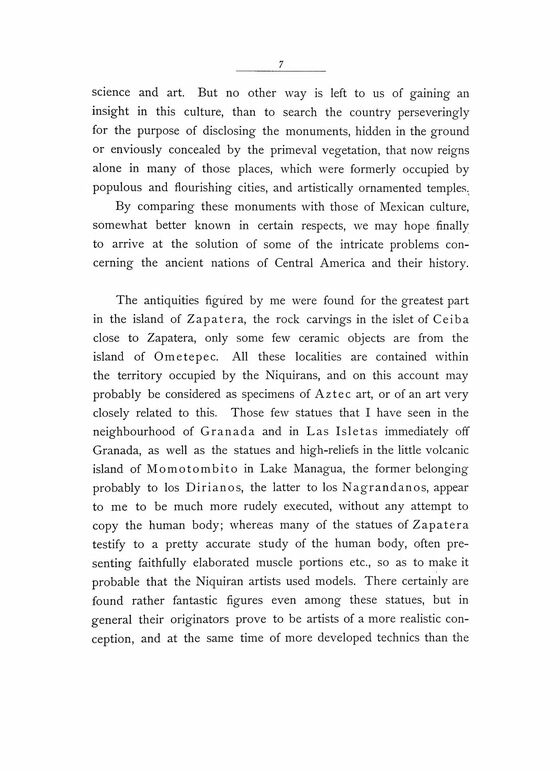
Full resolution (JPEG) - On this page / på denna sida - Sidor ...

<< prev. page << föreg. sida << >> nästa sida >> next page >>
Below is the raw OCR text
from the above scanned image.
Do you see an error? Proofread the page now!
Här nedan syns maskintolkade texten från faksimilbilden ovan.
Ser du något fel? Korrekturläs sidan nu!
This page has never been proofread. / Denna sida har aldrig korrekturlästs.
science and art. But no other way is left to us of gaining an
insight in this culture, than to search the country perseveringly
for the purpose of disclosing the monuments, hidden in the ground
or enviously concealed by the primeval vegetation, that now reigns
alone in many of those places, which were formerly occupied by
populous and flourishing cities, and artistically ornamented temples.
By comparing these monuments with those of Mexican culture,
somewhat better known in certain respects, we may hope finally
to arrive at the solution of some of the intricate problems
concerning the ancient nations of Central America and their history.
The antiquities figured by me were found for the greatest part
in the island of Zapatera, the rock carvings in the islet of Ceiba
close to Zapatera, only some few ceramic objects are from the
island of Ometepec. All these localities are contained within
the territory occupied by the Niquirans, and on this account may
probably be considered as specimens of Aztec art, or of an art very
closely related to this. Those few statues that I have seen in the
neighbourhood of Granada and in Las Isletas immediately off
Granada, as well as the statues and high-reliefs in the little volcanic
island of Momotombito in Lake Managua, the former belonging
probably to los Dirianos, the latter to los Nag ran dan os, appear
to me to be much more rudely executed, without any attempt to
copy the human body; whereas many of the statues of Zapatera
testify to a pretty accurate study of the human body, often
presenting faithfully elaborated muscle portions etc., so as to make it
probable that the Niquiran artists used models. There certainly are
found rather fantastic figures even among these statues, but in
general their originators prove to be artists of a more realistic
conception, and at the same time of more developed technics than the
<< prev. page << föreg. sida << >> nästa sida >> next page >>